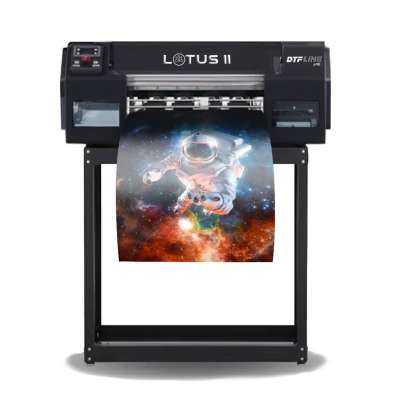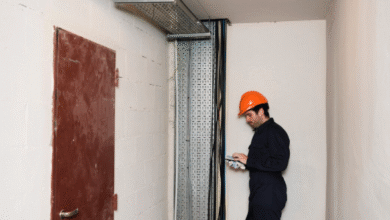Start Your Own Custom Apparel Line with a DTF Printers


The custom apparel industry has never been more vibrant—or more accessible. What used to require large investments in equipment, labor, and bulk inventory can now be done from the comfort of your home or studio. Thanks to DTF Printers, aspiring entrepreneurs and creatives are launching successful clothing brands without the overhead or hassle of traditional methods.
If you’ve ever dreamed of starting your own t-shirt line, fashion brand, or personalized merchandise shop, a DTF printers can be the perfect tool to bring that vision to life. In this blog, we’ll walk you through how DTF printing works, why it’s ideal for new businesses, and how to use it to build a profitable custom apparel line from the ground up.
What Is DTF Printing?
Direct to Film (DTF) printing is a digital transfer process that involves printing designs onto a special PET film using water-based inks. The printed film is coated with a heat-activated adhesive powder and then transferred to fabric using a heat press.
What sets DTF apart is its versatility and ease of use. It works with a wide range of fabric types—cotton, polyester, blends, fleece, and more—without requiring pre-treatment. This means you can print on t-shirts, hoodies, tote bags, and other apparel with excellent quality and durability, even if you’re just getting started.
Why Choose DTF for Your Apparel Line?
Here are several reasons why DTF printing is ideal for launching a custom clothing brand:
1. Low Start-Up Costs
You don’t need industrial-scale machinery or expensive pre-press setups. A compact DTF printer, heat press, and basic supplies like PET film and adhesive powder are all you need. This lowers the barrier to entry for small businesses and side hustlers.
2. Prints on All Fabric Types
Unlike sublimation, which only works on polyester, or vinyl, which can be time-consuming, DTF printing lets you create full-color, high-resolution prints on nearly any fabric type. This allows for a diverse product range, including fashion, accessories, and activewear.
3. No Pre-Treatment Required
DTF eliminates the need for fabric pre-treatment, saving time and simplifying production. The print-and-press workflow makes it perfect for on-demand fulfillment and fast turnaround.
4. Long-Lasting and Professional Quality
DTF prints are stretch-resistant, crack-proof, and washable. Your customers will get vibrant, detailed prints that hold up over time—giving your brand a reputation for quality.
5. Great for Custom Orders and Short Runs
You can print one shirt or one hundred without changing setup or wasting materials. This makes it easy to offer limited-edition drops, personalized products, and test designs without committing to large inventories.
How to Start Your Apparel Brand with DTF
Launching your own custom apparel line can be broken down into manageable steps. Here’s how to begin:
1. Define Your Niche or Style
Think about the audience you want to serve. Are you designing for streetwear fans, fitness enthusiasts, artists, or eco-conscious shoppers? Defining your niche helps guide your designs and brand message.
2. Set Up Your Printing Workspace
Invest in the essentials:
- A reliable DTF printer (A3 size is popular for startups)
- Heat press machine
- PET transfer film
- DTF inks and adhesive powder
- Design software (like Adobe Illustrator, CorelDRAW, or Canva)
A small space like a spare room or home office can be converted into your production studio.
3. Create Original Designs
Strong visuals are the heart of any apparel brand. You can design graphics yourself or hire freelance artists to help bring your ideas to life. Focus on styles that connect emotionally with your target audience—humor, inspiration, culture, or identity.
4. Source Blank Apparel
Choose quality blank garments from reputable suppliers. Consider comfort, fit, and fabric type. Since DTF works on a variety of fabrics, you have flexibility to experiment with different products—t-shirts, hoodies, sweatshirts, tote bags, etc.
- Print and Test
Print a few samples to test your colors, placement, and durability. Wash and wear them to evaluate quality. Take high-resolution product photos to use for your online store and marketing.
6. Launch Your Brand Online
Create a simple online store using platforms like Shopify, WooCommerce, or Etsy. Use social media to build a community around your brand and share behind-the-scenes looks, design previews, and customer reviews.
You can also participate in pop-up markets, craft fairs, or collaborate with local influencers to generate buzz.
7. Offer Customization
Allow customers to personalize shirts with names, dates, or colors. This makes your product more valuable and unique. DTF’s flexibility makes one-off customization easy and profitable.
- Scale and Optimize
Once you gain traction, consider expanding your product range or upgrading your equipment. You can also streamline operations with workflow software, outsourcing non-essential tasks, or even turning your brand into a full-time business.
The Profit Potential of DTF Printers
The combination of low cost, fast turnaround, and high-quality output makes DTF a powerful revenue generator. You can price your shirts and apparel competitively while maintaining healthy profit margins. Personalized and limited-edition items can command even higher prices.
Additionally, the print-on-demand model reduces waste and minimizes financial risk—ensuring that your earnings grow sustainably.
Final Thoughts: From Idea to Apparel Line
With the right tools, a clear vision, and a bit of creativity, launching your own apparel brand is more achievable than ever. DTF printing removes many of the technical and financial barriers that once made entry into this industry difficult.
So whether you’re an artist looking to turn your art into wearable fashion, or an entrepreneur ready to build a clothing brand, DTF printing offers a flexible, scalable solution to get started—and grow fast.
Read this also




